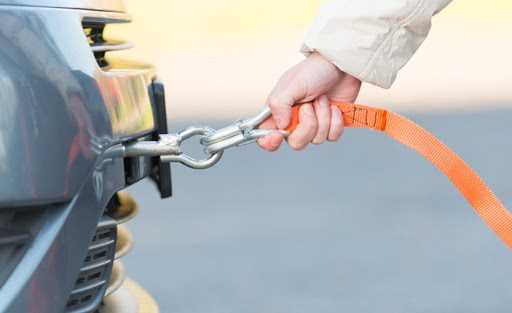Are you preparing for a move? If so, you’re not alone. Approximately 35.5 million Americans move each year, relying on everything from old family station wagons to professional movers.
While we’ll all experience at least a few moves during our lifetimes, it doesn’t make their impact any less anxiety-inducing. Research suggests moving is even more stressful than divorce!
To combat the hassle of a move, many people go to extreme lengths to economize. They pack and drive their own rented moving truck. They use a car dolly to move their vehicle, often behind the rental moving van they drive. While this approach might seem like the best way to nix unnecessary moving costs (and stress), does it hold up to scrutiny?
Let’s take a closer look at the causes of moving stress and whether DIY tactics like using a car tow dolly helps or hinders the process.
Why Moving Remains One of Life’s Most Stressful Events
What makes moving such a stressful life event? According to researchers, it’s all about the little things that add up to be big problems. So many moving parts can feel challenging to keep track of, let alone organize and address.
Research also shows that the anxiety related to moving can impact our health, both physically and mentally. It can even lead to more injuries and accidents, including car accidents. That’s the last thing you need when you’re driving an unfamiliar moving van with a complicated car tow dolly across the US!
Why do people react so poorly to moves? It has to do with the number of “life change units” people endure in a brief time. Moving comes with many of these so-called units, from finding a new home to packing boxes and organizing the actual move.
What are some tips for minimizing this stress? They include asking for plenty of help and hiring professional movers. You should also reconsider the tow dolly approach to moving your vehicle. After all, hiring a professional company to move your car is far more affordable than you realize.
What Is a Car Dolly?
Many options exist when it comes to transporting a vehicle, whether it’s between states or between coasts. Options include using a tow bar, trailer, or tow dolly. Why do people choose tow dollies in the first place? This two-wheeled trailer only keeps the drive wheels of a car off the ground during transport. As a result, it’s a smaller device that won’t take up much room in your garage. It also proves a relatively inexpensive investment.
You’ll find plenty of “car tow dolly for sale” ads at sites like Craigslist and eBay. Rentals prove affordable, too. That said, whether you rent a car dolly or purchase a heavy-duty car dolly, you need to understand their pitfalls and how they could impact the safety of your vehicle.
The Pitfalls Associated with a Car Dolly
Despite the advantages listed above, the pitfalls of using a car dolly might make you rethink your moving approach. These cons include:
- Weight restrictions
- Clearance
- Maneuverability
- Hook-up procedures
- Wear and tear
You need to understand how each of these issues could impact your car and the ease of a move. If you opt to use a car dolly, the first thing you need to be aware of is weight restrictions.
-
Weight Restrictions
Tow dollies don’t carry as much weight as car trailers do. For example, if you rent one through a vendor, get ready for serious restrictions. Most standard rentals can’t haul all-wheel drive or front-wheel drive cars exceeding 3,450 pounds. As for rear-wheel drive vehicles? They shouldn’t weigh more than 3,900 pounds. Don’t ignore these weight limits! They exclude a wide range of cars, including most sports utility vehicles, trucks, and older, steel-framed vehicles.
-
Clearance
Another issue you need to be aware of is the impact of clearance issues on towing older vehicles. Tow dollies only hold up the drive wheels of a car. This setup spells trouble for automobiles with the following characteristics:
- Long in the front
- Low to the ground
- Has ground effects
In each of these cases, components of your car could drag on the ground during the move. This drag can, in turn, lead to damage to body kits, undercarriage parts, bumpers, and deep transmission pans. During the process of loading your car onto the tow dolly, you’ll also face enhanced risks of damage to the body and undercarriage. Talk about adding stress to an already tricky move!
-
Maneuverability
Let’s say your car doesn’t have any issues with weight restrictions or clearance. You’re home free, right? Not necessarily. You need to understand what it’s like to drive with a car dolly attachment. You see, most tow dollies are a pain to drive.
For one, backing them up is nearly impossible. This fact can cause problems when it comes to correct positioning when you reach your final destination. A car trailer with all four wheels off the ground proves far easier to back up.
-
Hook-Up Procedures
Here’s another thing many first-time dolly users don’t realize it. The hook-up procedures associated with using a car dolly prove more complicated than those of loading a full trailer.
Why? Because having the two back wheels off the road can lead to plenty of issues if you don’t have the front wheels thoroughly secured. You may even need to take drive shafts out when towing a rear-drive car this way. These problems have the potential to greatly exacerbate an upcoming move.
-
Wear and Tear
The whole car dolly setup also leaves plenty of potential for vehicle wear and tear. This risk starts with the back tires on the ground. Depending on how far you must travel, expect uneven tire wear. The longer you use a tow dolly, the greater the wear and tear to the car’s wheels, too. Why? Because more weight gets shifted to the back in this unnatural position. After all, cars don’t get designed to drive on the back two wheels alone.
Reducing the Stress of Your Upcoming Move
As you can see, car dolly towing comes with many hidden hassles. From weight restrictions to maneuverability and wear and tear, you owe it yourself to explore other car transportation options. Where to start? Check out our blog for more helpful hints to streamline your next relocation, whether from state to state or coast-to-coast.





